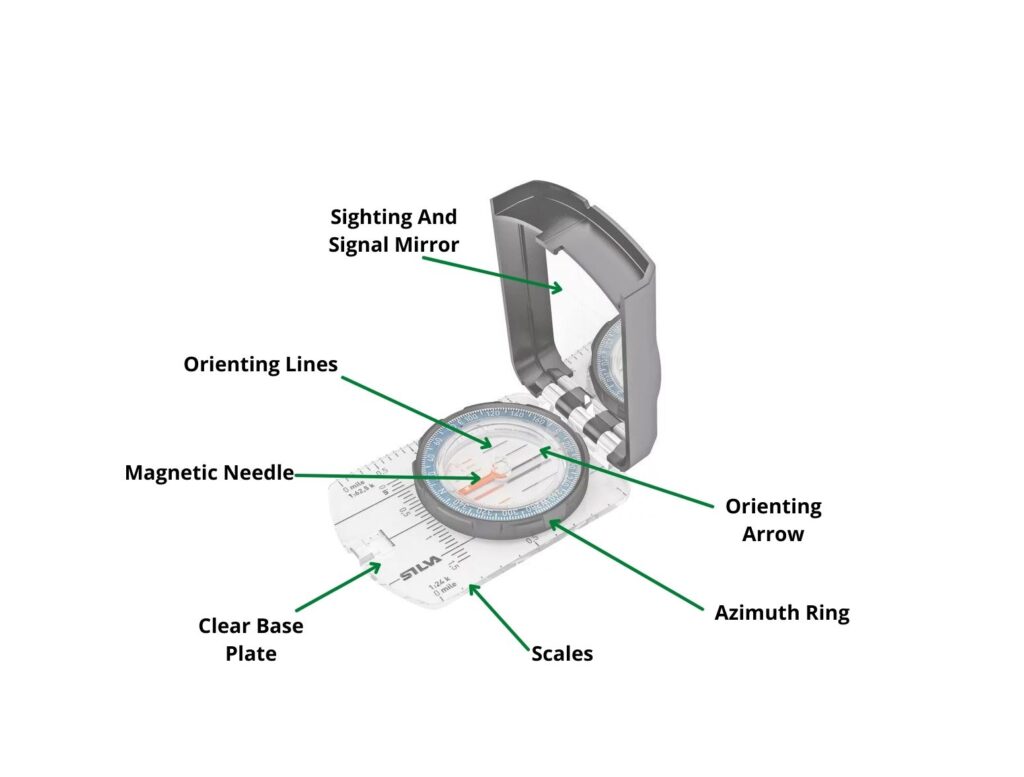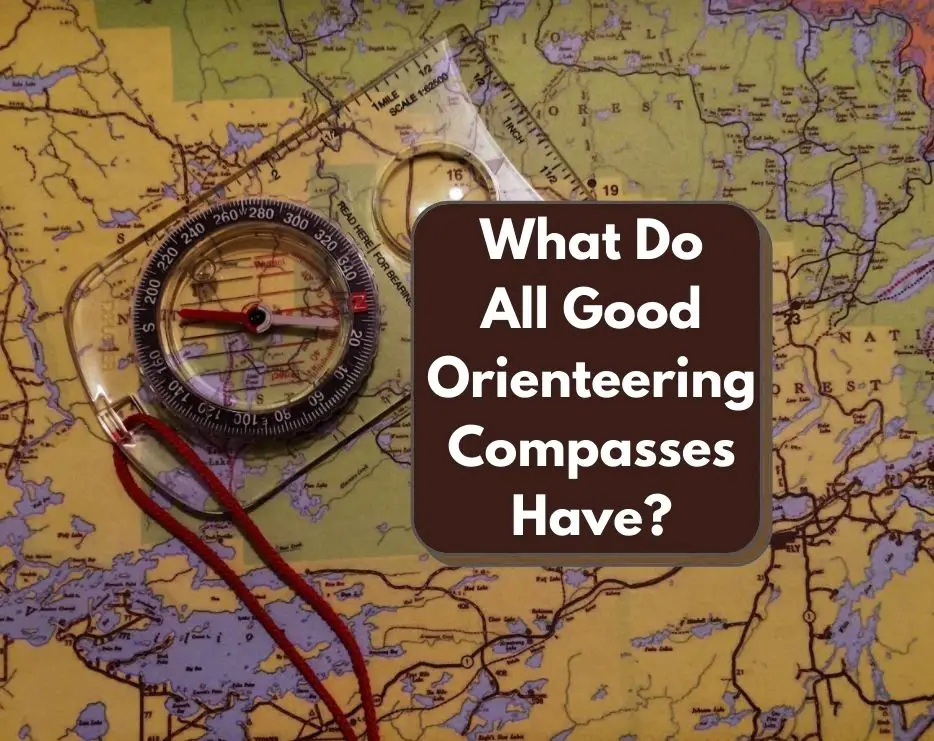What do all good orienteering compasses have?
If you’re into orienteering, then you know how important it is to have a quality compass, and not just any compass will do.
So what makes a good orienteering compass? We’ll cover that in today’s guide.
What Do All Good Orienteering Compasses Have?

An orienteering compass is a crucial piece of equipment for navigating outdoors. A good orienteering compass will have these 4 features:
- A clear base plate that allows you to see the map underneath the compass
- Straight sides for aligning two separate points or for drawing lines on maps
- A needle housing filled with liquid that keeps the magnetic needle steady for taking map readings
- Two separate arrows: a direction arrow painted on the compass’s base plate is used to point the compass from your starting point to your ending point, and an orienting arrow located within the needle housing so you can orient your compass to the map
What Two Arrows Should A Good Orienteering Compass Have?
All good orienteering compasses should have two arrows:
- a direction arrow on the base plate, used for pointing the compass from your start point to end point
- an orienting arrow within the needle housing, used to orient your compass to the map
How To Use An Orienteering Compass

An orienteering compass is used for navigating through unfamiliar or difficult terrain. It will help you find your way, even when the path isn’t clearly marked.
Follow these steps on how to use an orienteering compass:
- Find a sturdy place to sit down with your map of the area and orienteering compass. Set them flat on the ground in front of you so that they’re both facing North, which allows you to see what’s going on.
- Place one hand over the needle housing to minimize any movement within it while you’re taking a reading from the map.
- Align one side of your compass base plate with a straight line on your map that leads between two different points you want to connect. The pointing direction of the compass needle should now be perpendicular (at a right angle) to that line on the map. If it’s not, rotate the entire compass until it is.
- Look down at your compass and find the orienting arrow- this will tell you which way North actually is on your map.
- With your other hand, hold onto the top of the compass housing and gently turn it so that the orienting arrow lines up with North as marked on your map. Now you’re ready to take some readings!
- Keeping your hand over the needle housing, slowly move the compass around in different directions on your map until you’ve found all of the points you were looking for.
- Once you have them all circled or highlighted, connect the dots with a straight line and you’ve got yourself a route!
If you’re ever lost or unsure of which way to go, simply take out your compass, orient it to the map, and follow the directional arrow until you reach your destination.
Compass Not Working? Here’s What To Do
Compasses are relatively simple pieces of equipment and don’t break often.
If your orienteering compass isn’t working, chances are that the poles got reversed due to your compass coming too close to another magnet.
How To Remagnetize A Compass
Place the compass facing upward on a flat and stable surface.
Place the south pole of the magnet directly on top of the compass needle and drag the magnet slowly along the length of the needle towards the north-marked end of the compass.
When you reach the edge of the compass, slide the magnet down the compass’s side, pulling the magnet away from the compass as you finish.
The Best Orienteering Compass
Our top pick for the best orienteering compass is the Suunto MC-2 D/L Mirror Sighting Compass.
It has all the features that good orienteering compasses have that we covered earlier in this guide and works very reliably.
- Professional compass with high precision and reliable functions, Mirror for direction finding and signalling, With clinometer
- Alignment to the North, Good legibility in poor lighting conditions due to luminous markings, Adjustable declination correction, Made in Finland
- Base plate with magnifier, USGS UTM scales, bearing hole and rear sight, Detachable carrying cord with snap lock, No batteries required
- High-quality stainless steel needle with jewel bearing, Liquid-filled capsule for stable operation, Plastic bezel
- Contents: 1x Suunto MC-2 NH USGS Mirror Compass, Incl. carrying cord, key for declination correction, quick release fastener, brief instructions, Colour: Transparent/Black, Dimensions: 65 x 101 x 18 mm, Weight: 74 g, Bezel Material: Plastic


